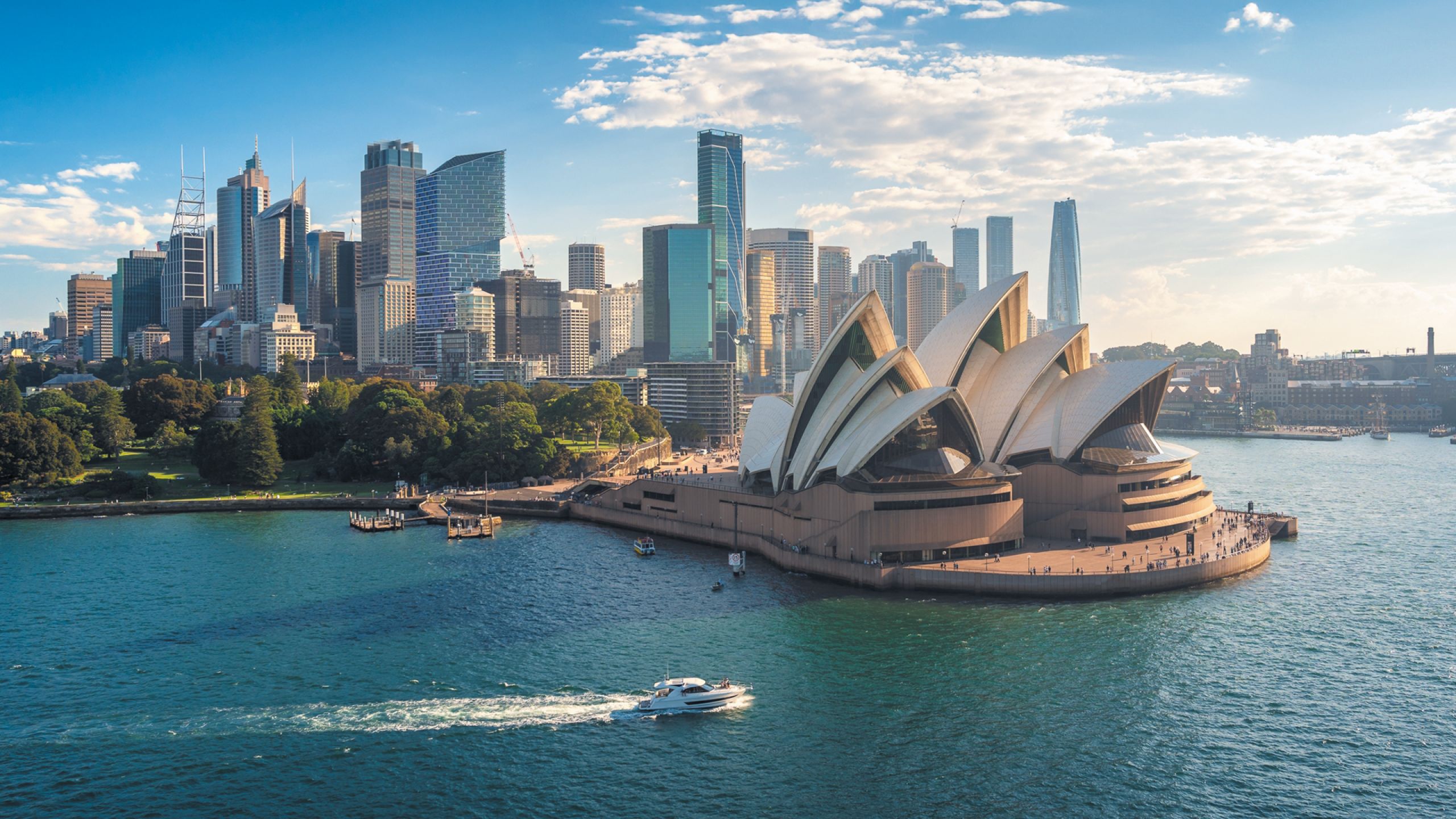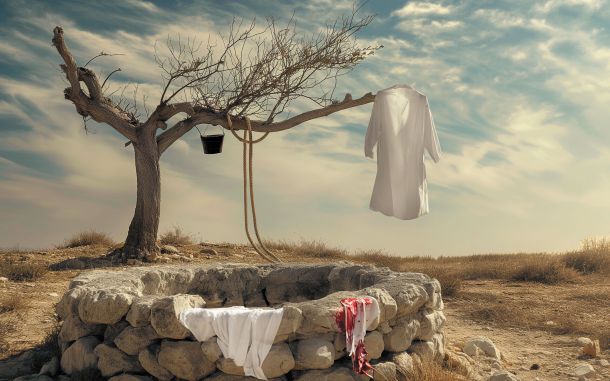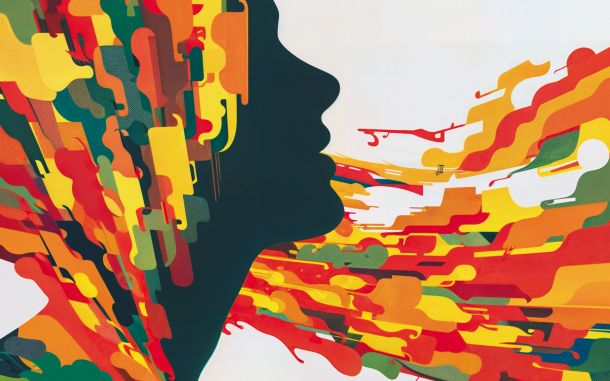Beyond Home: The Spirit of Sydney

In This Article
-
To truly uncover humanity’s instinctive affinity with an identified home, we must first explore the structural integrity from which a place, or house is fabricated.
-
Sydney is home to over five million individuals, a precise nexus intricately constructed by the sense of home manifested by this thriving population. Sydney presents to all a particularly superficial beauty, like the surface of the ocean.
-
We often overlook the importance of the journey, seeing it only as a means to an end. Yet, it is through this placid ignorance that we lose the inexplicably exquisite nature of our motion and how it is enabled by means of our city’s corridors.
The Ancient Romans, centuries ago in their ornate dwellings of grand and timeless stone, held a religious belief; a consolatory certainty toward the existence of Genii Loci - ‘the spirit of place.’ [1]. An echo of home preserved by a connection to place that penetrates below the surface and grasps the spirit; a deity of personal comfort, a fragment of our soul that occupies the place where we reside. A home from within.
We, as humanity, thrive on the notion of belonging and similarity. Despite our cunning individuality, we each conform to the parallel status of our innate condition, born and grown from the same roots of our externalised world. And it is from this universal cognizance that we develop a perpetual state of comfort, an internal recognition of the significance of place, a personal construction of an integral home.
But how do we discern the ambiguous margin between place and home?
What is it about a certain location that incites the bond between a person and a place, the soul and the city?
To truly uncover humanity’s instinctive affinity with an identified home, we must first explore the structural integrity from which a place, or house is fabricated. Our focus on place is usually centralised around superficiality, the verdant grass, the ancient, evergreen trees. But what is it about these seemingly ordinary elements that manifest into the internal spirit of home? May it be how we exchange with these fabrics of place? May it be how the grass gently caresses the soles of our feet like plush carpet, moulding to our every step, or how the monumental gums align above our heads like a roof, an underlying inflection of our homely connection?
This connection between person and place was made particularly apparent to me in the words of William Sturmn Sax:
"People and the places where they reside are engaged in a continuing set of exchanges; they have determinate, mutual effects upon each other because they are part of a single, interactive system" [2].
I believe it is within these exchanges that a person and a place fuse into one distinct reality; a constant resonance of home like light reflecting from two opposing mirrors, engaging in an eternal conversation within which each refraction enhances the last. Could it be that we are the Genii Loci which inhabits a place; our place, colouring the surface with personalised perceptions while our souls remain hidden like true light buried within, constructing in confidence the essence of our familiarity?
Sydney is home to over five million individuals, a precise nexus intricately constructed by the sense of home manifested by this thriving population. Sydney presents to all a particularly superficial beauty, like the surface of the ocean. A void of azure which seemingly offers its deepest secrets to any individual who decides to unlock the rolling waves, delivering themselves openly in an act of sheer transparency. Albeit those who have familiarised themselves with this deceptive sea, know all too well the unending extent of this same ocean and the unknown depths that lie beneath – all the concealed magic that stirs below.
And it is this magic that remains solely visible to those who uncover the spirit within the city; those who reply to the walls that talk, travel down the eternal corridors and open each sealed door.
Corridors
There are ten primary traffic corridors which traverse Sydney, a delicate web connecting us and our secret lives to the intricate flow of humanity. The ‘orbital network’ [3]- as it’s colloquially known - 110 kilometres of seemingly straight and straight forward corridors; trajectories leading us further and further into the vibrancy of Sydney's arterial heart.
These corridors, the infinite connection of cultures, personalities and livelihoods, guide us through the maze of our lives. We travel them frequently; unconsciously, merely perceiving them as modes of transport, as gravel or asphalt tamed to the natural level of the earth. Yet in actuality these roads are the liminal spaces that allow us to exist between two destinations; where we are and where we desire to be. They lead us to intersections, demanding decisions which define our prophesied destination:
Stop.
Give Way.
Turn Right.
Turn Left.
And it is from these imposed decisions that we connect with our evolving existence, the pathway that allows us to reach our identity, our home.
We often overlook the importance of the journey, seeing it only as a means to an end. Yet, it is through this placid ignorance that we lose the inexplicably exquisite nature of our motion and how it is enabled by means of our city’s corridors. We too easily miss the interrelationships of our city, and how each movement, whilst spinning us into a new orbit, paradoxically unites the culture of our city in a humble union. And although we may not feel this connection, we contribute to it daily – fortuitously. It is through this unconscious action that we are able to define the place that surrounds us, and as we engage within it, we become the pinnacle on which its definition depends. Ironically, it defines us.
I remember the first time I drove alone in Sydney; a tense yet inadvertently emotional rite of passage. I remember the exact feeling, as if my movement had conversed with the road and I was no longer travelling upon a meaningless path; but rather a tailored ellipse in which I, and those surrounding me, were destined to orbit. The roads which had captured my earliest memories seemed remarkably dissimilar to my experience that day, as the control of my palms upon the wheel countered my memories in an act of solidarity to the road. The veins that stemmed on the back of each tightly clenched hand were a map; a personal directory that guided my journey, manifesting the essence of my familiarity onto the corridor I pursued through the city; oblivious of my fate, but keenly aware of the incipient feeling which continued to flourish like a star gaining energy over time, expanding its brightness, a North Star.
We each remain for much of our lives, blissfully unaware of our beginning; the moment in time that binds us to this seemingly eternal corridor we pursue. But it is through this unconscious orbit that we define the place we know; the initial construction upon which our future comfort lies, accumulating as we spin toward our next destination, whilst seemingly strengthening our bond to the last. Corridors, the guiding orbits to our suburbs, suburban rooms; the basis of our eternal home.
Living rooms
As a young child, I would spend an undeniably unhealthy amount of time within the confining walls of my bedroom, my own area of familiarity which I never desired to abandon. Being secluded within this space, I became hyper-aware of my surroundings; especially the sounds which arose directly outside the sealed entrance of my room. I would watch as shadows danced along the small slit where the door sat just above the ground, becoming all too familiar with the creak of the floorboards as someone would set their foot to the right of the final step. It was far from an annoyance, though. Rather, it was a comfort.
As much as I valued my time concealed away, I knew I was never far from the familiarity of the people I love. To hear that creak was, in my mind, equivalent to the salty scent of the coastal suburbs, or the ceaseless shrill of car horns in the city, a definitive reminder of the culture and connection that surrounded me. A reminder that, even from within the personally tainted confines of those four ivory walls, I was part of a greater home.
Like my sanctuary, each suburb within the greater Sydney region is incontestably unique. They each reflect their own sense of culture, art and experiences that are offered to each individual who occupies them. It is within this distinction that we find we are able to uncover our own sense of belonging, as the vibrancy of the city initiates an inflection which penetrates our souls; provides colour to our identity. Though our city is not divided as a result of this definition. It is rather bound by these disparities, creating interconnecting rooms of the vast home which we move through. Instilling a greater sense of personal comfort within a universal world of familiarity.
The characteristics of each suburb are like fragments that fuse to the grand mosaic of home, like small aspects of a person which define a greater portion of who they are; or better yet, who they will become.
There’s a small suburb situated ten kilometres south-west of Sydney city, called Earlwood. It exists as a place of residence only to a small portion of the population. The narrow streets, lined with shops connected from wall to wall and mounted by red-brick apartments seem to have become achromatic at the ever-progressing hands of time, making them an anomaly in comparison to the industrialised jungle only minutes away.
Though, further within the suburban landscape and enclosed by the sparse line of bordering bush, a small mosaic lies amongst the green gums. It pays a tribute to the area’s Traditional Owners, the Bediagal People [4]. With its message of Respect, Unity, Peace spelled out in glittering fragments of glass and tile, it releases ancient light upon the world that surrounds it, illuminating the sacred path from cultural past to present. And it is within those small fragments of glass that a never-ending refraction of stories, experiences and lives, embedded deep within Indigenous culture of the city are freed. Though the monument remained concealed from the wide eyes of city-goers, its mere existence builds the walls of the city, the room, and gives light to the people within it.
The Earlwood monument, like a window within a room, provides this light to an era previously silenced by the ever-progressing hands of time, expanding our view of what now is, only justifiable to the notions of what once was. It communicates to us an unending conversation between past and present, what we have built and what we have erased.
These connections which we discover in our suburban rooms surround us with inflections of our identity. They remind us that the beauty of Sydney is illusory for those who are yet to be initiated into its deeper secrets hidden beyond the light of the trees, the earth, the seas. For me, Sydney’s resonances are as familiar as the creak outside my bedroom door which gave me that familiar sense of home. I know my Genii Loci, the transcendent value of the light within, the artefacts of Sydney that remain buried within the ground, enlightening our modern society with the emulation of the Eora Nations’ overlooked eternal past. A past from which our Sydney is entirely structured upon, the source, the foundation of home.
Foundation
A foundation, by definition, is ‘an underlying basis or principle,’ something which contributes to the holistic feature of a construction in our world, a structure which remains hidden despite its stark value. A symbol of importance; a beginning but never an end. The foundation of our world can be simplified into a record of organisms, into the layers of prehistoric rock that pile below our feet, preserving the only remnants of a life before ours. But it is not upon these withered bones that the skeleton of our world is constructed. It is through our own intangible experience, the manifestation of our culture, that moulds our city and seeds the roots of an eternalised home. The foundation upon which we survive is the perennial core of our existence.
Standing amidst the oasis of Sydney's Botanical gardens, surrounded by lush and vibrant vegetation whose roots span far below my feet, I am presented with a view of pristine beauty, a direct line of sight leading to The Sydney Opera House.
Sharpened sail-shaped shells appear to have risen through the ground, piercing the air, capturing the essence of our city within their gentle yet structured curves, a superficial symbol of our modern innovations, which conceal the apparent void buried in the rock and dirt beneath. Polished concrete blankets the grand concourse, ostensibly smoothing over the rough aggregate of its innate form, rendering it suitable for white habitation in place of an honoured civilisation of 65,000 years that rests idly beneath.
Centuries ago, amidst the green gums and dwarfed underwood, a small tidal island broke the surface of the sea, located on the tip of the eastern arm of Warrane, a place later known by colonists as Sydney Cove. The isle, singularly inhabited by the Gadigal people [5] who identified it as their rightfully claimed land, was strewn with oyster shells, their serrated edges guarding the island from foreign footprints, sealing the enduring cultural past that manifested beneath. It remained attached to the fertile mainland by a corridor of piled rock, a guiding early foundation between the ancient land and its eternal meanings.
Upon the blooming grass of the tidal island in the late 1700s, a squared red-brick hut planted itself, covering the dense silica soil that had flourished through layers of eroding sandstone. The structure was an outlier amongst the spanning foliage, enforcing a status of infiltration despite its supposed homage - a small sentiment to the monumental man after whom it was honourably named. Bennelong Hut: the first plantation of colonised industry on sacred soils, an infestation disguised as the growth of mutuality, the catalyst of a new era from which a superficial Sydney would sprout upon the true culture of Indigenous roots cultivated to the earth’s core. The hut, though, gave name to the land which had been nurtured by those who had imprinted it incipiently, a universal resonation with the ranging tract of land now known as ‘Bennelong Point.’
And as the lights dim amongst the prosperous sociability of contemporary living in a place now known as Barangaroo, the gloom of the night comes alive with these spirits of the past. It is to this genesis of our city that we owe our home, as we connect with each layer of the foundation which piles below our feet. For it is not our familiarity to the place in which we reside that incites our homely cognizance, but rather our connection to its roots, the fabrication of an eternal foundation inherited by the timeless influence of the past. The Genii Loci of Sydney; the first inhabitants of this land.
Epilogue
It is through this revelation of our city, the identification of our roads as our corridors, the creation of our suburbs as our rooms and the enlightenment of the past as our foundation, that we construct a place capable of an eternalised comfort which lends itself to our souls, a place which we truly know as home so that we may truly know ourselves.
And at the very end of it all, we are only left to disassemble the walls, rip up the carpet and reveal the foundation that lies beneath; to rebuild all that has been erased. We must reconstruct the place we know.
To know home, we must travel beyond home.
References
- Jiang, Z., & Lin, D. (2022). Genius Loci of Ancient Village from the Perspective of Tourists Experience: Scale Development and Validation. International journal of environmental research and public health, 19(8), 4817. https://doi.org/10.3390/ijerph19084817
- Sax, W. S. (1991). Mountain goddess: Gender and politics in a Himalayan pilgrimage. Oxford Univ. Press.
- Chung, Jen & Rebhuhn, Carrie & Yates, Connor & Hollinger, Geoffrey & Tumer, Kagan. (2019). A multiagent framework for learning dynamic traffic management strategies. Autonomous Robots. 43. 10.1007/s10514-018-9800-z.
- UBC Web Design. (2010). Bediagal people. Australian Monuments, Statues, Dedicated | Monument Australia. https://monumentaustralia.org.au/themes/culture/indigenous/display/107851-bediagal-people
- Aboriginal history and the Gadigal people. (2013). City of Sydney. https://www.cityofsydney.nsw.gov.au/history/aboriginal-histories









